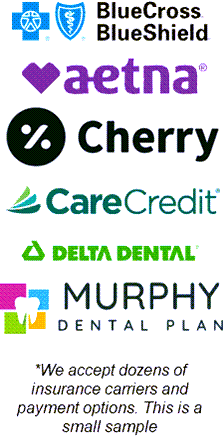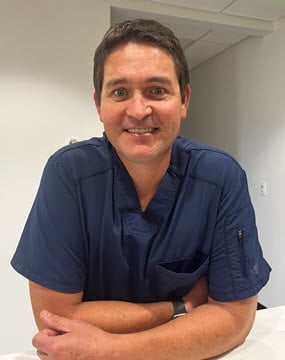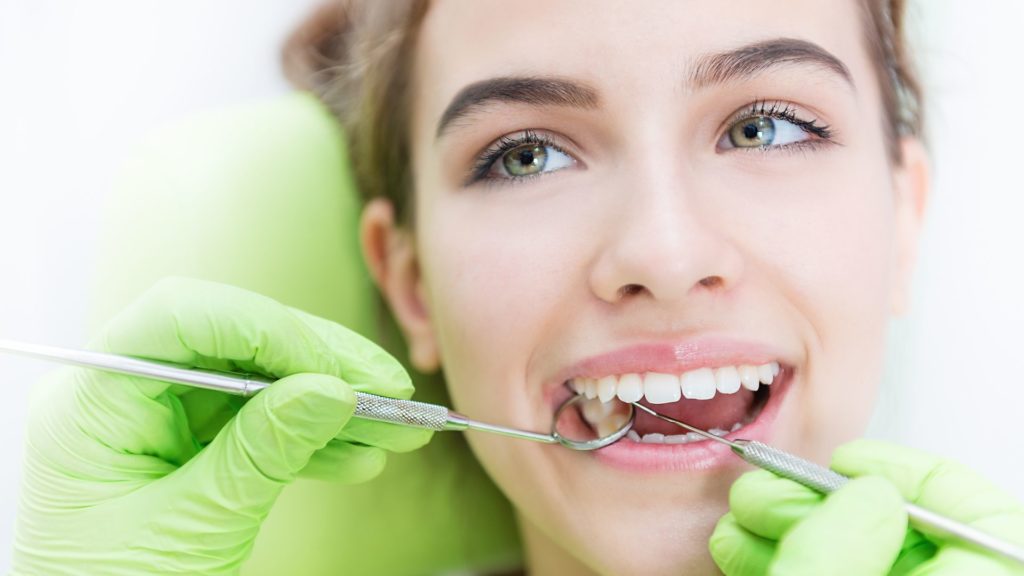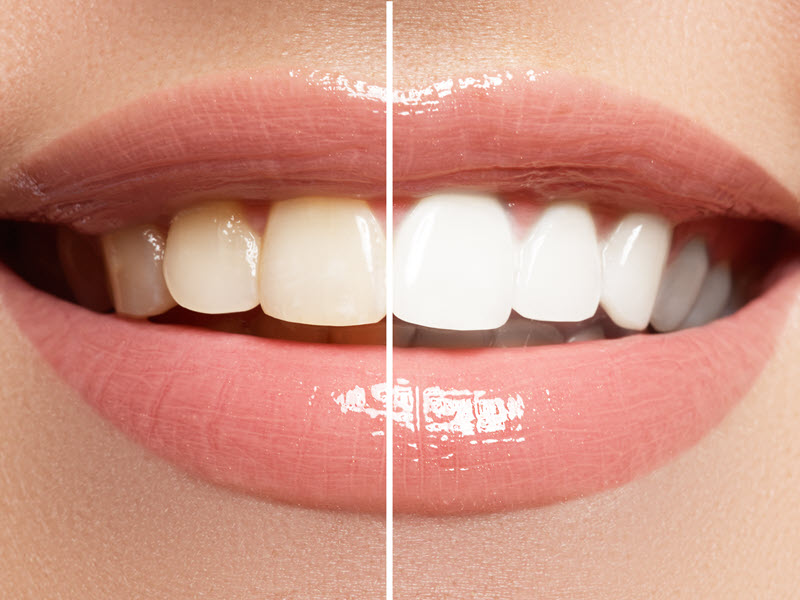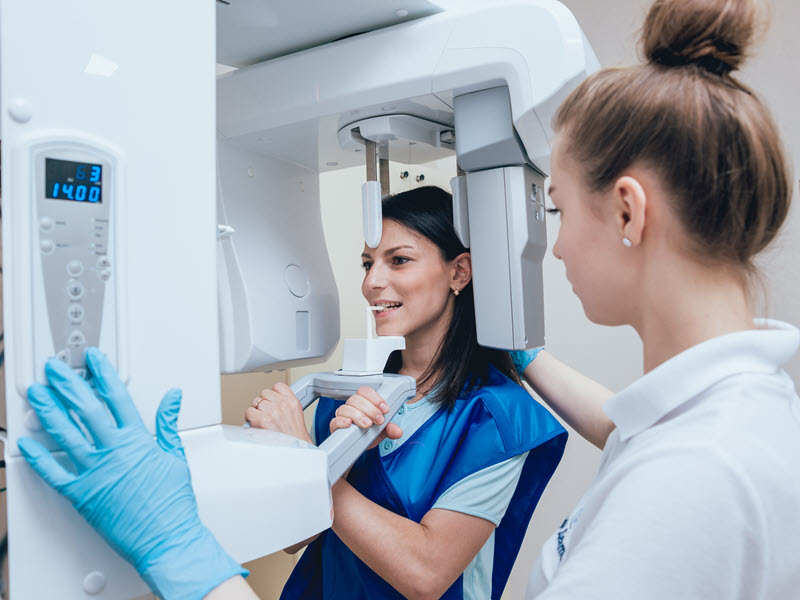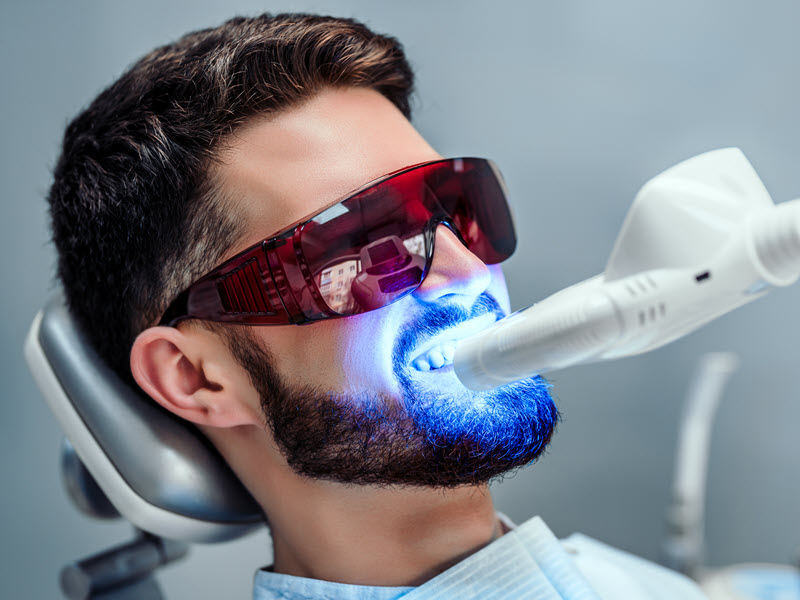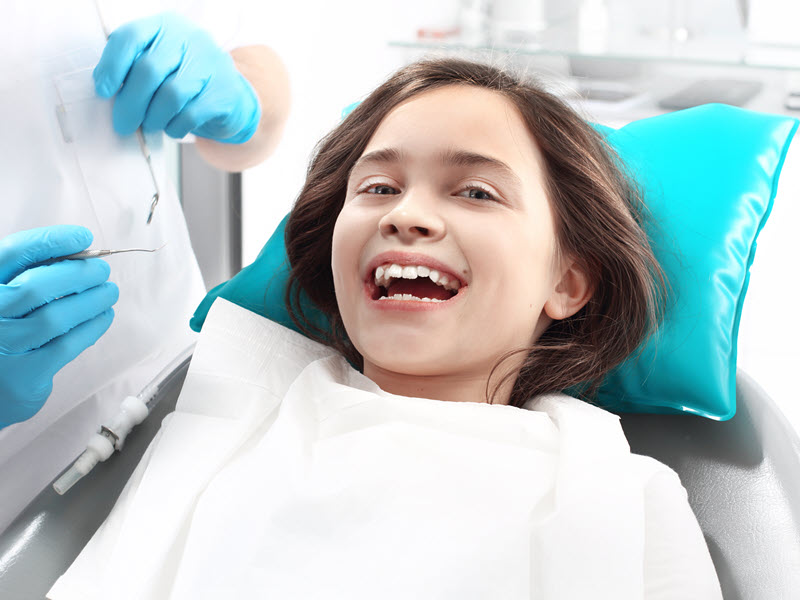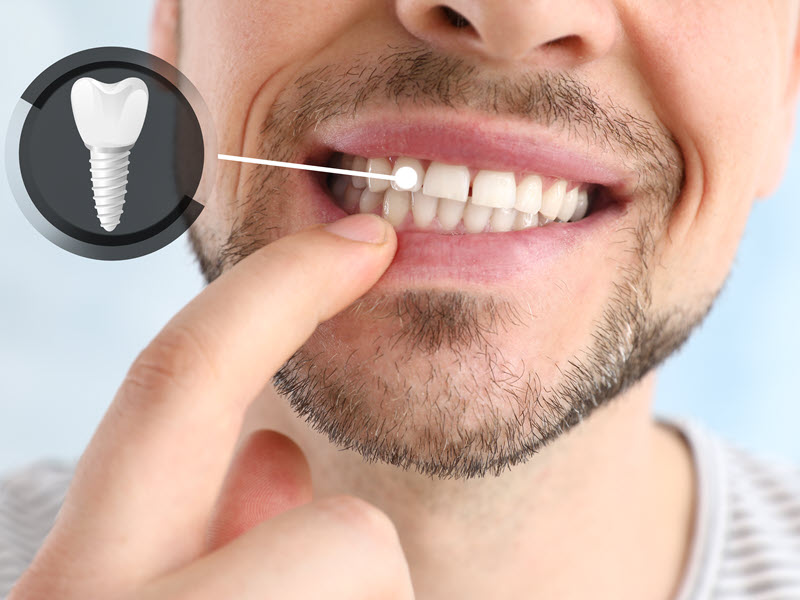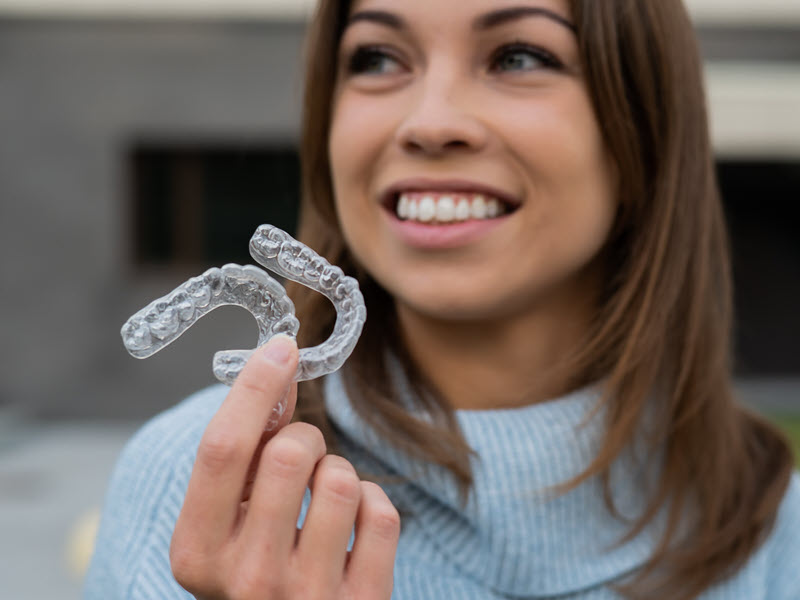History of Lasers at Dental Practices
While it may seem that use of lasers at dental practices is a relatively new phenomenon, laser dentistry has its origins back in the 1960s (National Institutes of Health). While it continues to improve, it is a proven technology with many different applications in dental care and can be used to maintain and improve your overall oral health.
At Murphy Dental, we use the Fotona Lightwalker dental laser system. Fotona was the first company to introduce a laser that can outperform dental drills back in 2004. The Fotona laser is able to treat many different dental issues – including both hard tissue and soft tissue laser treatments. Dental laser procedures can effectively treat both cosmetic and restorative dental problems.
Our Fotona Dental Lasers
How a Dental Laser Works
A Dental LASER (Light Amplification by the Stimulated Emission of Radiation) works by focusing light energy in a tight beam at the hard or soft tissue in your mouth. Once in contact with the tissue in your mouth, the laser is able to perform the desired effect on your teeth or soft tissue.
There are two main types of lasers used in dentistry: hard tissue lasers and soft tissue lasers.
With our Fotona Dental Laser we are able to perform both hard tissue and soft tissue procedures.
Soft Tissue Lasers
A soft tissue laser is typically used to work on soft tissue like your gums. The laser interacts with the soft tissue in your mouth which absorbs the energy of the laser. The result is that the laser is able to shape or eliminate soft tissue for the desired effect.
Hard Tissue Lasers
A hard tissue laser works on bone structures in your mouth – like teeth and even jawbone. A soft tissue laser is typically used to work on soft tissue like your gums.
Multiple Wavelengths
Many procedures are performed using the highly absorbed Er:YAG laser wavelength, others use the more deeply penetrating Nd:YAG laser wavelength.
Dental Laser Benefits
The pros and cons of using a dental laser over other, more traditional dental procedures are below:
Dental Laser Pros
Precision and Accuracy
Our Fotona Lightwalker laser has a pulse monitoring system based on Dual Anergy-meter Technology that ensures 100% accuracy during laser dental services. This high level of accuracy reduces the chances of damage to any nearby soft tissue. This combined with the onboard Energy Feedback Control helps to maintain consistent pulse output which keeps our patients safe.
Lower Risk of Infection
Unlike traditional dental surgery, laser surgery is less invasive. Lasers are able to seal blood vessels as they work which results in less bleeding and a lower risk of infection. A dental also laser sterilizes the area during the procedure. The overall result of the laser precision combined with the lower risk of infection results in a quicker recovery time for many dental procedures.
Less Pain
Due to the high level of precision, a dental laser sometimes reduces the need for anesthesia during dental procedures (when compared to traditional drills). In addition to sedation dentistry, lasers can be a good option for patients with high dental anxiety.
Less Time at the Dental Office
Lasers used to treat several dental conditions may result in less time in the dental chair for restorative dentistry procedures when compared to more traditional oral surgery options
Dental Laser Cons
Despite Their Versatility, They Can't Do Everything
Lasers are extremely effective at many restorative and cosmetic dentistry procedures. That said, they can be limited in some cases – like the following:
- Hidden Cavities – Dealing with cavities that are between teeth may not be possible with a laser depending on the location of the cavity
- Anesthesia – While lasers can reduce pain during some procedures, they don’t completely eliminate the need for anesthesia in all cases
- Existing Fillings – Lasers are unable to work on teeth that already have dental fillings present and are unable to remove existing amalgam
- Dental Drill May Still be Required – Depending on requirements, a drill may be required in addition to the laser in some cases
Dental Laser Treatments
Our Fotona Dental Laser is employed by our office and by many dental professionals to treat a wide variety of common dental issues. Just some of the minimally invasive laser treatments are described below.
Treating Sleep Apnea with Lasers
Sleep apnea is a condition where a person stops breathing during sleep. It can be caused by the relaxation of the muscles in the throat and tongue.
The Fotona laser is used to treat sleep apnea by reshaping the tissues in the throat to increase airflow. This procedure is called Laser Assisted Uvulopalatoplasty (LAUP).
This non invasive, user-friendly laser method is utilized to improve the quality of a person’s sleep. NightLase shrinks collagen in oral tissue creating a tightening effect for this previously loose tissue. This reduces the symptoms of sleep apnea and reduces the loudness of snoring.
Treating TMJ Disorder with Lasers
TMJ disorder is a very frustrating condition that affects the jaw. Individuals experiencing TMJ experience pain, clicking, popping, and restricted movement in their temporomandibular joint.
ComfortLase is Fotona’s photobiomodulation laser treatment. Photobiomodulation used for this treatment involves using red light energy (both visible and near-infrared) to treat a variety of ailments including TMJ. This non-invasive laser treatment tamps down inflammation and encourages cells to heal themselves as well as promoting quicker tissue regeneration in the affected areas of your mouth.
Endodontic Treatment for Root Canals
If you have diseased pulp within your tooth, you’ll need a root canal. This infection can cause quite a bit of pain and needs to be addressed before the diseased tissue spreads the infection to surrounding teeth.
One of the major challenges of performing a root canal is to effectively treat and disinfect the entire region as part of the root canal.
Fortunately, lasers can be used to clean and disinfect the entire canal in a minimally invasive fashion.
Periodontics
Lasers are able to replace more traditional periodontal oral surgery procedures as well as effectively treat periodontal disease. Uses include:
- Gingivoplasty – this is one of the many cosmetic procedures that can be performed using laser dentistry and involves the reshaping of the gums to make them more aesthetically pleasing
- Gingivectomy – gum surgery involving the removal of portions of your gums surrounding your teeth in order to treat gum disease
- Gum Depigmentation – this is another cosmetic procedure that involves reducing the melanin in gums to remove dark spots
- Crown Lengthening – crown lengthening involves removing gum tissue to expose more of the underlying tooth. This dental laser treatment can be performed for cosmetic reasons as well as for therapeutic reasons – such as having enough tooth available to place a dental crown
Laser Teeth Whitening
One major laser based cosmetic procedure that we offer in our office is laser teeth whitening. You can get your teeth several shades whiter in just one visit.
Oral Surgery
Many oral surgery procedures involving a scalpel and sutures in the past can now be performed more quickly and less painfully with the use of lasers. The extremely focused light of the laser allows for pinpoint precision of treatment without affecting the surrounding tissue. Lasers also naturally coagulate blood which minimizes both bleeding and the chances of infection.
In addition to many of the other procedures presented on this page, lasers can be a substitute for many oral surgery procedures including:
- Fibroma Removal – Our Fotona laser is able to remove benign tumors from your mouth
- Hemangioma Removal – Hemangiomas are caused by an abnormally dense group of extra blood vessels. Treating Hemangiomas with a laser is quick, offers a quicker recovery time than oral surgery and it won’t even leave a scar.
- Leukoplakia Removal – Leukoplakia are white patches on the inside of the mouth. These lesions can effectively be removed with our laser treatment
- Operculectomy – This procedure used to require oral surgery, but lasers can now be used to achieve the same results. The procedure involves removing a flap of gum tissue over a partially erupted tooth. Lasers can cut this gum tissue and coagulate it at the same time. This results in less bleeding and a quicker recovery time.
Peri-Implantitis Treatment
Dental Implants have a very high success rate, but sometimes there are complications. Peri-Implantitis is an infectious disease that causes inflammation in the soft tissues in the location where a dental implant has been placed. Left untreated, this condition can lead to bone loss and potentially the loss of the implant.
With Fotona, we’re able to use lasers to treat peri-implantitis. We’re able to remove affected tissue from the inflamed area as well as stimulate bone growth and decontaminate the implant site.
Numbing Teeth with Lasers
Lasers can be used to numb teeth before procedures without the need for traditional injections. The laser stimulates the nerves in the tooth to produce a numbing effect that lasts for several hours. This can reduce anxiety and discomfort for patients who are nervous about receiving injections.
Cavity Preparation
The Fotona Laser can also be used to prepare your teeth for fillings without the need of a drill. The laser removes caries (decayed part of the tooth tissue – or cavity) while leaving healthy dentin tooth structure intact. It can even remove tooth decay that is below the gum line.
There are many benefits to you when using this technique to deal with cavities:
- Less (or no) anesthesia – The Fotona laser treatment can reduce the need for anesthesia and make the procedure more comfortable for the patient.
- Better tooth preparation – Prepping your tooth for a filling in this manner means that your tooth will create an ideal surface for bonding to the filling without the need for acid etching.
- Speed – You’ll spend less time in the dental chair with laser cavity preparation
The Academy of Laser Dentistry
The Academy of Laser Dentistry promotes is a US based organization that promotes the use of lasers in dentistry. It provides education and training for dentists who wish to incorporate laser technology into their practices. The academy also conducts research and advocates for the use of lasers in dental procedures.
